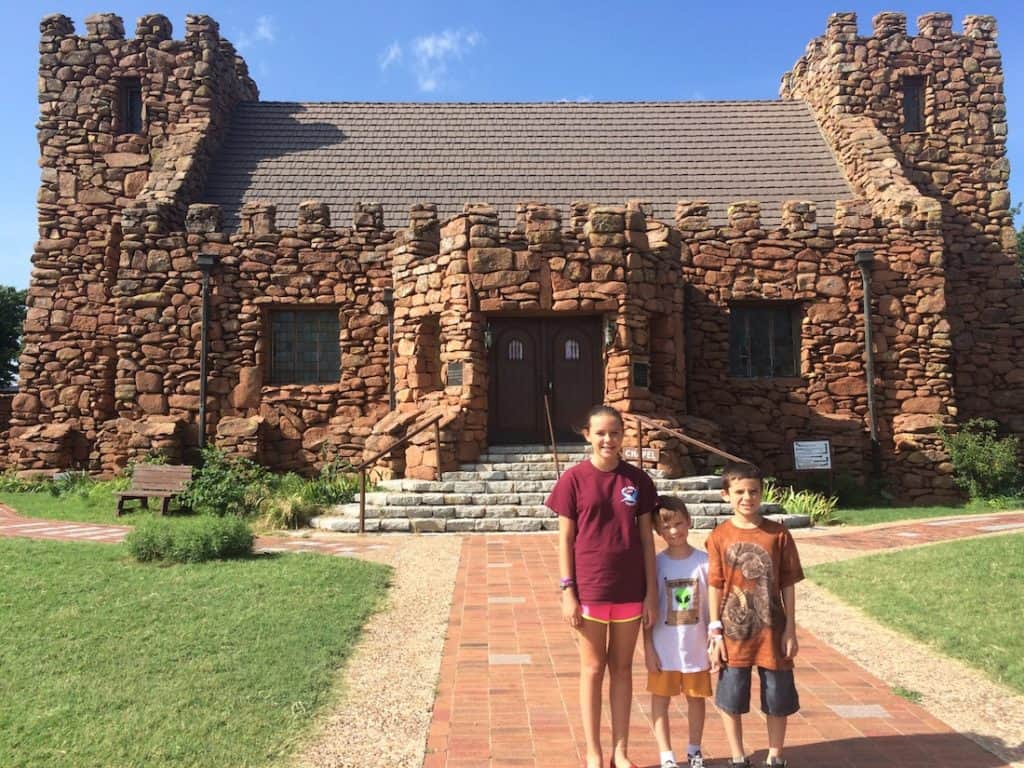Exploring Lawton, Oklahoma: A Road-Trip Gem
Located in southern Oklahoma, Lawton is 85 miles southwest of Oklahoma City. Whether you’re looking to see buffalo graze, go hiking, or explore historical sites, Lawton offers a variety of fun activities. It’s an ideal stop if you’re road-tripping along Interstate 44.
7 Best Things to Do in Lawton, Oklahoma
Visit the Wichita Mountains Wildlife Refuge
Wildlife spotting is always a favorite during car trips. One of the top attractions in Lawton is the Wichita Mountains Wildlife Refuge, which spans over 59,000 acres and is home to free-range buffalo, Texas Longhorn cattle, prairie dogs, deer, and elk.
Stop at the Quanah Parker Nature and Visitor Center for an interpretive display and more information about the site. For wildlife viewing, the Mount Scott Road is highly recommended as it travels through the refuge.
Another great activity at the Wichita Mountains Wildlife Refuge is hiking. The refuge offers 30 miles of hiking trails, including several short and easy options like the Environmental Education Center Trail (0.1-mile), the Jed Johnson Tower Trail (0.5-mile), and the Quanah Parker Lake Trail (0.4-mile).
Camping is also available at the Doris Campground, which has 47 tent sites, 23 RV sites, and 20 walk-in sites. Camping fees start at $22 per night.
The refuge is located at 32 Refuge Headquarters Road, Indiahoma, OK, 20 miles northwest of Lawton. It is open from sunrise to sunset seven days a week with free admission. The visitor center is open daily from 9 a.m. to 5 p.m. Be sure to bring drinking water, as there is no potable water within the refuge.
Tour the Comanche National Museum and Cultural Center
Our first stop to learn about Quanah Parker and the Comanche people is the Comanche National Museum and Cultural Center. This museum focuses on the history of the Comanche people from their beginnings to the present day.
During our visit, we learned about 17 men who were WWII Comanche Code Talkers, who helped defeat Hitler during D-Day by using their native language to communicate in an undeciphered code. We also enjoyed the art display featuring Comanche artists.

The museum is located at 701 NW Ferris Avenue. It is open from 8 a.m. to 5 p.m. Monday through Friday, 10 a.m. to 2 p.m. on Saturday, and closed on Sundays. Admission is free, and the visit typically takes about an hour.
Visit the Museum of the Great Plains
This museum is dedicated to the diverse cultures inhabiting the Great Plains region, beginning with the arrival of the Paleo-Indians, known as the Clovis culture, which arrived around 11,500 BCE.
Throughout the year, the Museum of the Great Plains offers living history events at the Red River Trading Post on its grounds. There is also a theater.
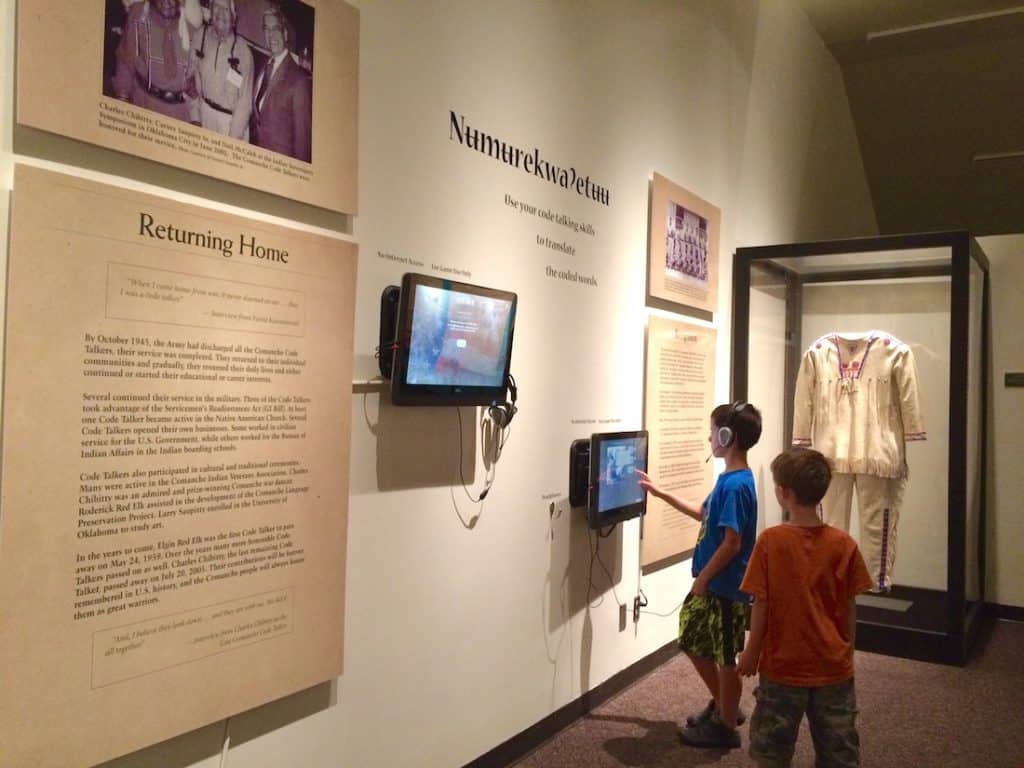
The museum is located at 601 NW Ferris Ave., Lawton. It is open Monday to Saturday from 10 a.m. to 5 p.m., and Sunday from 1 to 5 p.m. Adult admission (13+) is $10, kids (3 to 12) are $8, with military and senior discounts available.
Walk Through the Holy City of the Wichitas
Close to the Wichita Mountains Wildlife Refuge, the Holy City of the Wichitas is a shrine west of Lawton. In 1926, Reverend Anthony Mark Wallock started an annual Easter Pageant. The 66-acre site received a federal grant in 1934, and the Federal Works Progress Administration built many of the remaining buildings.
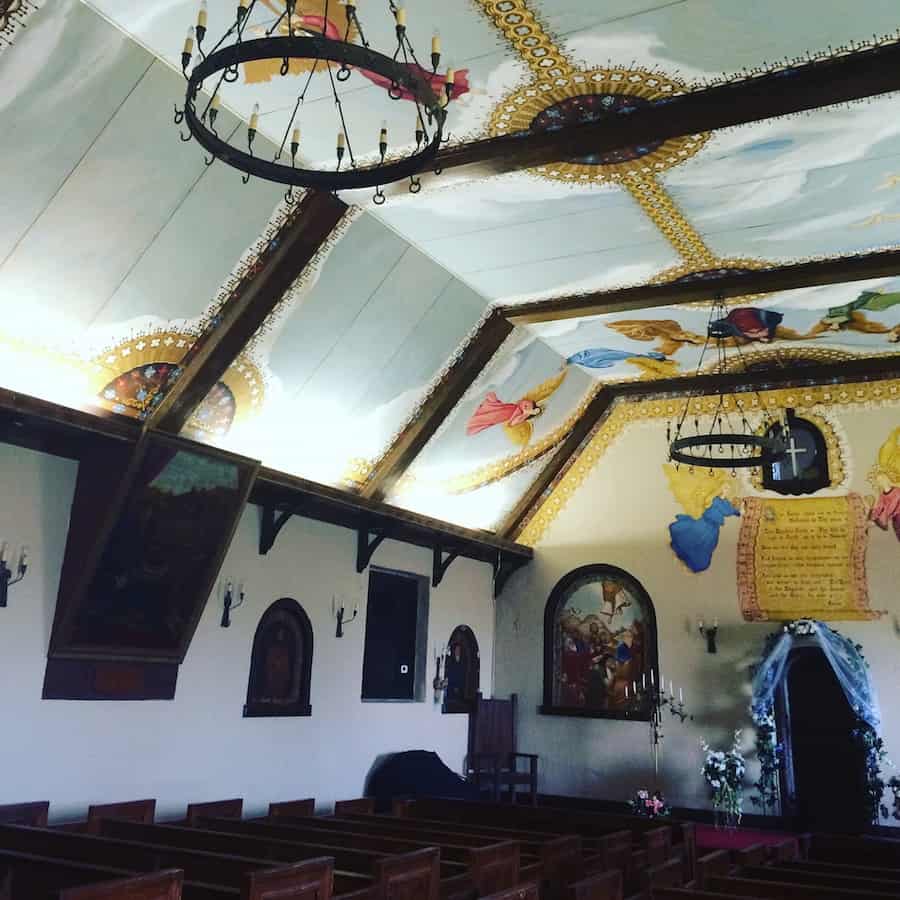
The annual Easter Pageant, “The Prince of Peace,” remains the longest-running passion play in the U.S. Depicting the birth, life, and death of Christ, the play drew a record crowd of 225,000 in 1939. With the Wichita Mountains as a backdrop, Jerusalem comes alive with the Temple Court, Calvary’s Mount, and the walls of Jerusalem.
The Holy City of the Wichitas is located at 262 Holy City Road inside the Wichita Mountains Wildlife Refuge. It is open Monday to Saturday from 8 a.m. to 5 p.m. and Sunday from 1 to 5 p.m. Entry is free, though donations are accepted.
Tour the Fort Sill National Historic Landmark and Museum
The Fort Sill National Historic Landmark and Museum features 34 historic buildings, including an original frontier fort. It is dedicated to the Post-Civil War era and includes exhibits on historic regiments with many military artifacts.
We walked through the U.S. Army Field Artillery Museum and Park, which is located nearby. Filled with Howitzers (wheeled artillery guns) from around the world, it is a must-do for those who love guns.

The museum is located at 435 Quanah Rd, Fort Sill, OK. It is open Tuesday through Saturday from 9 a.m. to 5 p.m. and is free to enter.
Visit Chiefs Knoll at Fort Sill Army Base
The Fort Sill Army Base is also home to the Fort Sill Post Cemetery (not to be confused with the Fort Sill National Cemetery). This is where you will find the final resting place of Comanche Chief Quanah Parker, the last Comanche Chief, his mother, Cynthia Ann Parker, and his little sister, Prairie Flower, on the high point of the cemetery at Chiefs Knoll.
Quanah Parker and his band of Comanches clashed with settlers moving into Texas and Oklahoma, resulting in the Indian Wars and the Battle of Palo Duro in the Texas Panhandle. After the overhunting of the buffalo and starvation of his people, Quanah Parker surrendered at Fort Sill in 1875.
The federal government appointed Parker the Chief of the entire Comanche people. He went on to become a successful rancher near Cache, Oklahoma, before dying in 1911.
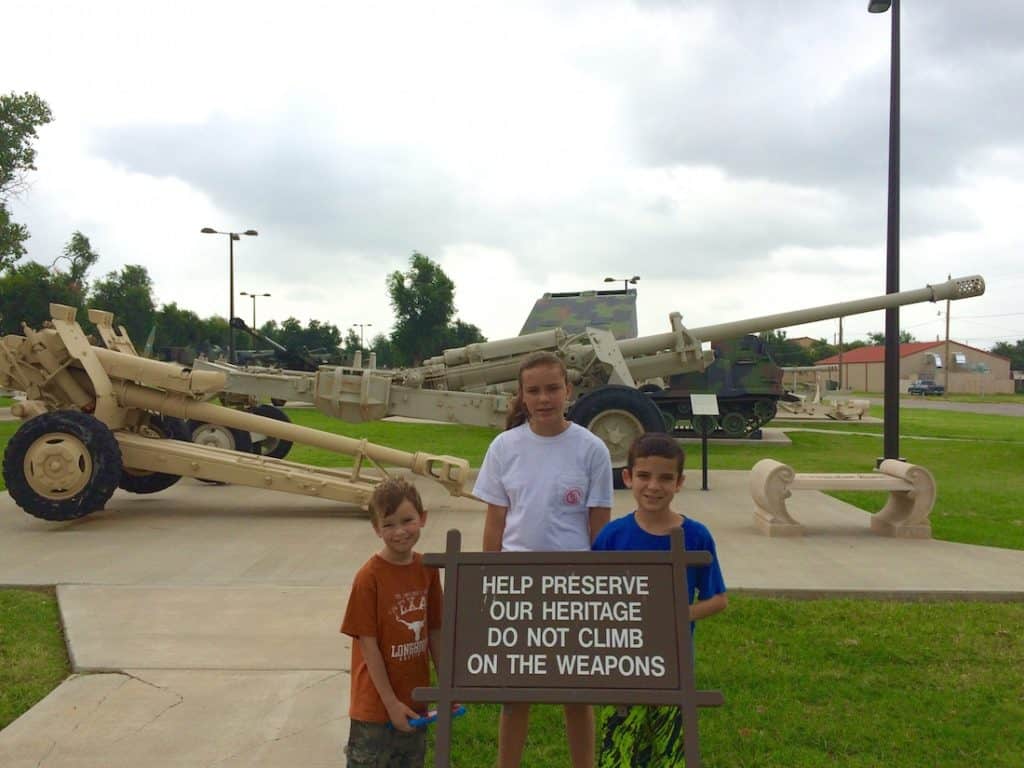
Learn About Comanche Chief Quanah Parker
We wanted to explore Lawton in part because of my personal family history. My last name is Parker, and Lawton features many sites important to Parker family folklore and the Comanche Nation.
Since I’m part of the large Parker family that’s lived in Texas since the 1830s, I wanted to share the legendary tale of Quanah Parker and his mother, Cynthia Ann Parker, with my kids.
The tale of the Parker family became a Texas legend when nine-year-old Cynthia Ann Parker was abducted from Fort Parker in east Texas in 1836. After an arduous bareback ride across Texas, she eventually assimilated into the Comanche Tribe. She melded into the culture and eventually married the Comanche Chief Peter Nocona.
They had a son, Quanah Parker, who would become the last Comanche Chief. As Texas and Oklahoma settlers encroached on the traditional lands of the Comanche people, the Indian Wars broke out. After a bitter battle in Palo Duro Canyon in Texas, Chief Quanah Parker would eventually move his people onto a reservation in Oklahoma.
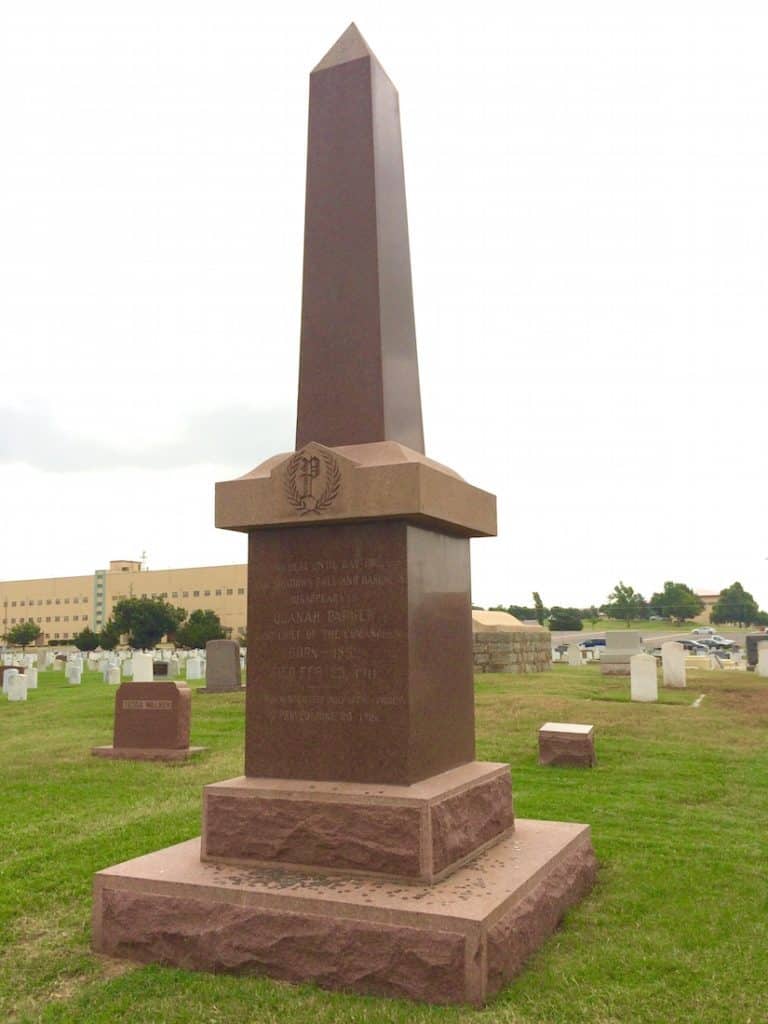
Know Before You Go
To gain access to Fort Sill, visitors are required to obtain a daily visitor pass at the Fort Sill Visitor Control Center at T6701 Sheridan Road. All adults are subject to a Department of Defense background check. It’s free and took 15 minutes to complete the process.

